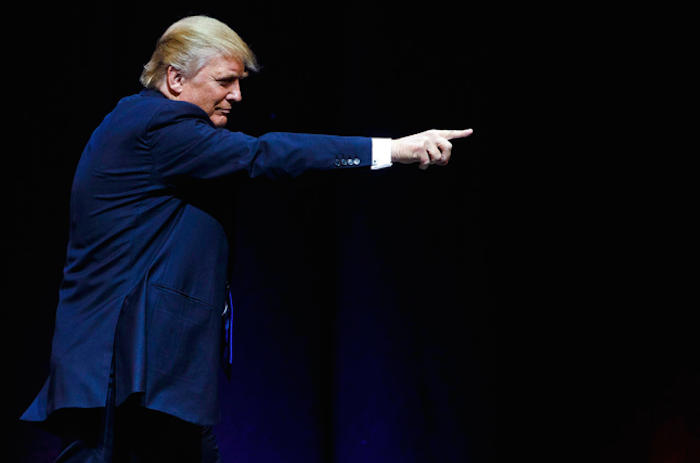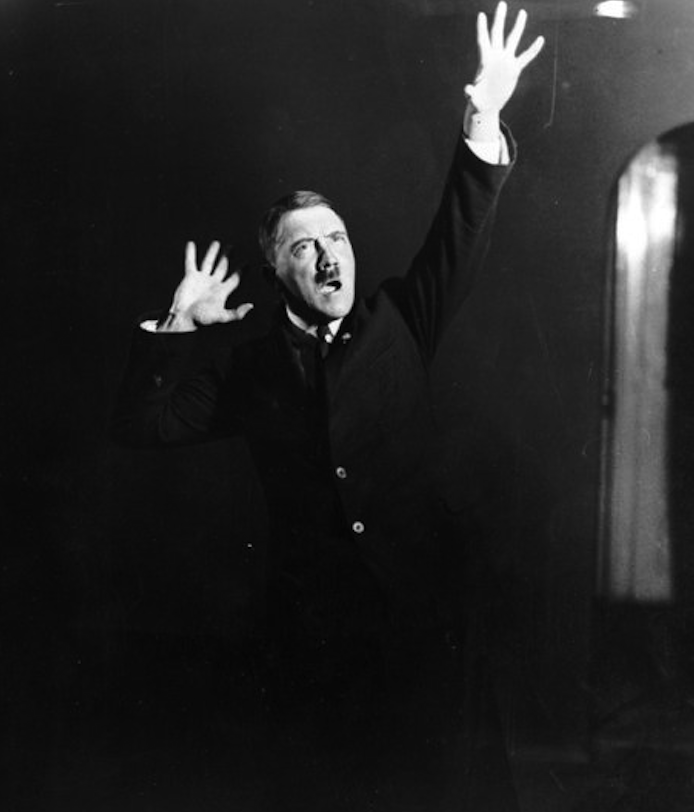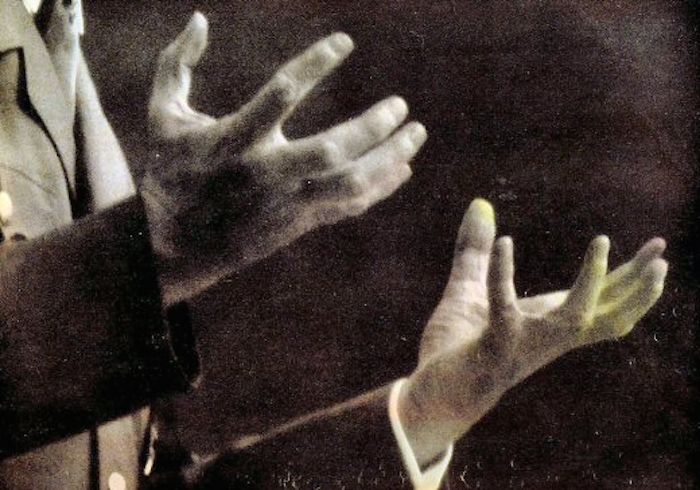
Photo: Justin Lane/EPA/Corbis
His fingers have been compared to cocktail sausages. He has been called “a short-fingered vulgarian.” His rallies are marred by violence. He assures us that the size of his hands is not an issue nor is any other part of his body. He decries the decline of his country. His hair is orange.
But before this demagogue had built his first gold and glass building there was another more powerful one. He also dreamed of walls, and deportations, and trafficked in fear. His hands were called feminine. His hair was black, not orange. But his dreams became a reality.

Cornelius Vanderbilt IV, the great-great grandson of Cornelius Vanderbilt, the railroad tycoon, was obsessed with Hitler’s hands. On March 5, 1933, the day Hitler was elected Reich Chancellor, Vanderbilt was standing off-stage at a Nazi rally at the Berlin Sports Palace. Vanderbilt was a special correspondent for Liberty magazine. He was there to interview Hitler.
Vanderbilt’s interview was brief: it took place as Hitler strode down a corridor toward the stage of the stadium. One-hundred-and-fifty-thousand people were chanting “Heil Hitler” and waving flags and sabers in anticipation of his arrival.
Vanderbilt’s interview was brief: it took place as Hitler strode down a corridor toward the stage of the stadium. One-hundred-and-fifty-thousand people were chanting “Heil Hitler” and waving flags and sabers in anticipation of his arrival.
Struggling to describe the frenzy of that night, Vanderbilt later wrote, “I wish there was some way of wiring these pages for sound; for how otherwise, without the accompaniment of howling crowds and thundering bands can I explain the nature of that miracle which throws a great nation, perhaps the greatest European nation, at the puny feet of a little chit of an Austrian corporal?”
He wasn’t able to wire his typewritten pages for sound, he did the next best thing: he made a film. Hitler’s Reign of Terror was the first American anti-Nazi film. It played to sold-out audiences for more than two weeks at New York’s Mayfair Theater in 1934. It was then quickly censored after objections by the German Ambassador to the US. The film was lost for over seventy years until a print was discovered in cold storage in the Brussels Cinematheque Royale in 2013.

Photo: Heinrich Hoffman
The film contains a partial reconstruction of Vanderbilt’s interview. It’s a wooden performance with an actor standing in for Hitler. It’s filmed on an almost laughable set.
The film’s simplicity belies its urgency. Vanderbilt had witnessed the book burnings, had been roughed up by a group of young Nazi brown shirts, and had escaped across the German border with film cans strapped to the undercarriage of his car. He recognized the menace that Germany posed and he didn’t underestimate the power that Hitler had over the Germans. “I never heard a man so able to sway a people,” he tells Edwin Hill, the CBS correspondent who is the film’s narrator, “he is a man of real ability, of force.” Although Vanderbilt found Hitler’s “bedlam manners” ridiculous, he also knew Hitler shouldn’t be underestimated: “He was as effective as a barker travelling in a side show in a circus.”
Vanderbilt later wrote a fuller account of his encounter with Hitler. “Tell the Americans” Hitler said as he gestured towards the packed arena, “that Adolf Hitler its the man of the hour … tell them he was sent by Almighty to a nation that had been threatened with disintegration and loss of honor these last fifteen years.” Vanderbilt then asked about the fate of the Jews. He had to shout over the roar of the crowd and the pounding of drums. Hitler “thrust a hand toward me, that flabby feminine hand with surprisingly large knuckles” and gestured to a towering man standing behind him. “My people are waiting for me,” Hitler said dodging the question, “he will tell you about the Jews and all the other things that worry America.”


Ernst Hanfstaengl was a Harvard educated Nazi apologist who had helped Hitler edit Mein Kampf as well as reportedly adapting the Harvard fight song “Harvard, Harvard, Rah Rah Rah” into the infamous Nazi chant “Seig Heil, Seig Heil. Seig Heil.” He had gained access to Hitler’s inner circle as a result of his passionate playing of Wagner’s Die Meistersinger von Nürnberg on the piano. Vanderbilt wanted nothing to do with him.
Hitler turned away from Vanderbilt and walked jauntily towards the stadium with his aids “trotting behind him in battle formation.” Vanderbilt ran after them. Standing on the edge of the stage he witnessed Hitler, lit by powerful Klieg lights and with giant Nazi flags billowing overhead, “raising his small feminine hands” in salute to the now hysterical crowd.
